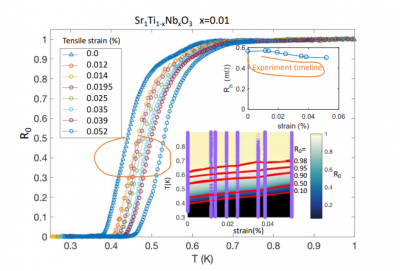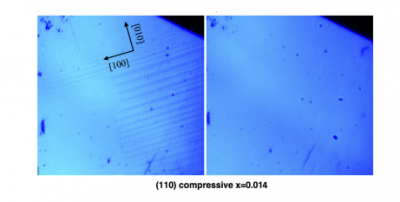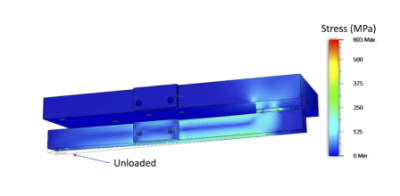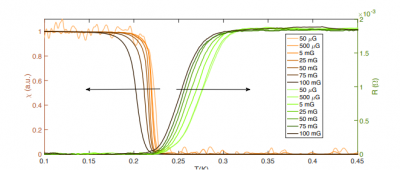Strain-engineered interaction of quantum polar and superconducting phases
Much of the focus of modern condensed matter physics concerns control of quantum phases with examples that include flat band superconductivity in graphene bilayers, the interplay of magnetism and ferroelectricity, and induction of topological transitions by strain. Here we report the first observation of a reproducible and strong enhancement of the superconducting critical temperature,


Millikelvin-compatible apparatus for studies of quantum materials under uniaxial stress
Various new phenomena emerge in quantum materials under elastic deformations, such as hydrostatic or uniaxial stresses. In particular, using uniaxial strain or stress can help to tune or uncover specific structural or electronic orders in materials with multiple coexisting phases. Those phases may be associated with a quantum phase transition requiring a millikelvin environment combined with multiple experimental probes. Here, we describe our unique apparatus, which allows in situ tuning of strain in large samples inside a dilution refrigerator while the samples are monitored via an optical microscope. We describe the engineering details and show some typical results of characterizing superconducting strontium titanate under stress. This letter should serve as a practical reference for experts in ultra-low temperature experimental physics involving uniaxial stresses or strains.


Precision measurements of the AC field dependence of the superconducting transition in strontium titanate
Strontium titanate has resurfaced as a material prompting vigorous debate about the origin of its superconductivity in the extremely low carrier concentration regime. Here, we used simultaneous AC susceptibility and transport methods to explore the superconducting phase transition region in this material. We determined that strontium titanate is extremely sensitive to even small AC fields, which also influence the resistive transition; we suggest that extreme vortex sizes and mobilities contribute to this large effect. Our findings will be of importance for accurately determining transition temperature, informing the debate about the pairing mechanism in strontium titanate, for which even millikelvin errors may be critical.

A local maximum in the superconducting transition temperature of Nb-doped strontium titanate under uniaxial compressive stress
Superconducting strontium titanate (STO) is in the spotlight as a low carrier concentration semiconductor in proximity to polar order. Its superconducting pairing mechanism poses an open fundamental challenge, which may be resolved by controlling how strongly the superconducting and polar orders interact. Here, we show for the first time that non-monotonic superconducting transition temperature behavior in uniaxially compressed STO can occur, revealing a reduction followed by a peak in the superconducting transition temperature. The corresponding displacements in the lattice are extremely small, in the sub picometer range, indicating that this material approaches a singularity in electron-phonon coupling, consistent with STO transforming to the polar (ferroelectric) phase that influences the superconductivity
